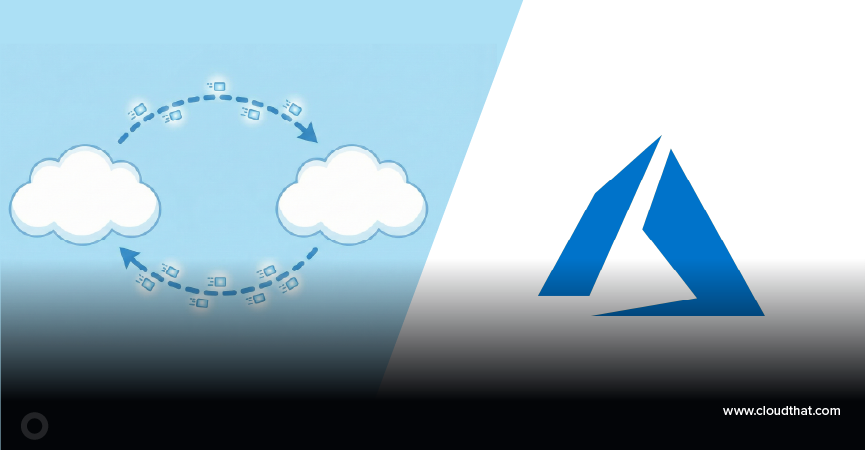|
Voiced by Amazon Polly |
Introduction
AWS Lambda@Edge is a powerful feature offered by Amazon Web Services (AWS) that brings the serverless computing model to the edge of the AWS global network. It allows developers to run custom code responding to CloudFront events at AWS edge locations close to end-users. With AWS Lambda@Edge, developers can extend the capabilities of Amazon CloudFront to perform real-time processing of HTTP requests and responses, enabling them to deliver dynamic and personalized content to users with lower latency.
By leveraging AWS Lambda@Edge, developers can write and deploy serverless functions in multiple AWS regions worldwide, ensuring a consistent and efficient user experience regardless of geographical location. This capability empowers them to enhance their applications with intelligent, on-the-fly processing at the edge, such as modifying HTTP headers, rewriting URLs, caching responses, or executing complex logic to customize content delivery. With AWS Lambda@Edge, developers can implement a wide range of functionalities and optimize content delivery based on specific user requirements while benefiting from the scalability and cost-efficiency of AWS Lambda’s serverless architecture. Overall, AWS Lambda@Edge enables developers to deliver faster, more personalized, and highly responsive content to their users by bringing compute capabilities closer to the end-user, resulting in an enhanced user experience.
Pioneers in Cloud Consulting & Migration Services
- Reduced infrastructural costs
- Accelerated application deployment
Why is AWS Lambda@Edge used?
AWS Lambda@Edge is dynamic content customization. AWS Lambda@Edge is used to extend the capabilities of AWS CloudFront.
Let’s say you have an e-commerce website with different product variations and pricing based on the user’s location. With AWS Lambda@Edge, you can write a serverless function that examines the user’s geographic location, retrieves the appropriate product details and pricing information from a database or API, and dynamically injects it into the response delivered by Amazon CloudFront. This way, each user receives personalized content based on their location without making additional backend requests for every user.
How does AWS Lambda@Edge work?
AWS Lambda@Edge allows developers to associate AWS Lambda functions with specific CloudFront events that occur at the edge locations of the AWS global network. These events can include viewer requests, origin requests, origin responses, and viewer responses. When an Amazon CloudFront event occurs, AWS Lambda@Edge automatically triggers the associated Lambda function, allowing it to execute custom code in response.
When a request is made to Amazon CloudFront distribution, it first reaches the nearest edge location. At this point, AWS Lambda@Edge intercepts the request and triggers the corresponding AWS Lambda function. The function executes and can perform various actions, such as modifying the request or response, generating dynamic content, or making additional API calls. The AWS Lambda function can also leverage services like Amazon DynamoDB or Amazon S3 to retrieve or store data as needed.
Once the AWS Lambda function has completed its execution, it returns the modified request or response back to Amazon CloudFront, which continues the content delivery process. The response is then sent back to the viewer, providing a customized and optimized user experience.
AWS Lambda@Edge provides a distributed and scalable architecture, allowing developers to deploy their Lambda functions across multiple AWS regions worldwide. This ensures that the functions are executed at edge locations geographically closer to end-users, minimizing latency and improving performance. With the ability to execute code at the edge, Lambda@Edge enables developers to implement real-time processing, caching, content manipulation, and other advanced functionalities while benefiting from the serverless and pay-as-you-go model offered by AWS Lambda.
Upload your application code to an AWS Lambda or use AWS Lambda@Edge blueprints. This code will be sent to Amazon CloudFront, setting up the code to trigger from Amazon CloudFront. The AWS Lambda@Edge ensures to run the code is globally closer to the user location, and we pay for the compute time consumed.

Source: AWS lambd@Edge
Utilizing multi-region Amazon S3 origins with Amazon CloudFront offers several benefits
- Improved Availability: By configuring Amazon CloudFront with multiple Amazon S3 buckets located in different AWS regions, you enhance the availability of your content. In case of an outage or maintenance in one region, Amazon CloudFront automatically switches to serving content from the available regions, ensuring uninterrupted access to your data.
- Enhanced Durability: Amazon S3 is designed for 99.999999999% (11 nines) durability. Using multi-region Amazon S3 origins with Amazon CloudFront further enhances data durability by distributing your content across multiple regions. This protects your data from complete loss in catastrophic events or failures.
- Reduced Latency: Placing your content closer to end-users is essential for reducing latency and improving the user experience. By utilizing multi-region Amazon S3 origins, Amazon CloudFront ensures that content is served from the AWS region nearest to the end-user, reducing the time it takes for data to travel and improving overall performance.
Configuring Amazon CloudFront with Multi-Region Amazon S3 Origins
To configure Amazon CloudFront with multi-region Amazon S3 origins, follow these steps:
- Create Amazon S3 buckets: Set up Amazon S3 buckets in multiple AWS regions where you want to store and serve your content. Ensure that the buckets are properly configured for public or private access, depending on your requirements.
- Create Amazon CloudFront distribution: In the AWS Management Console, navigate to the CloudFront service and create a new distribution. Select “Web” as the delivery method and specify the desired settings for your distribution, such as cache behaviors, SSL certificates, and access control.
- Configure origins: Add multiple Amazon S3 origins to your Amazon CloudFront distribution. Specify the bucket name and the corresponding region for each origin. You can also customize origin settings, such as origin protocol policy and path patterns.
- Configure caching and TTL: Set up caching behavior for your Amazon CloudFront distribution to determine how frequently content is fetched from the origin. Adjust the Time-to-Live (TTL) settings to balance freshness and caching efficiency.
- Test and monitor: After the configuration is complete, thoroughly test your Amazon CloudFront distribution to ensure that content is served correctly from the desired regions. Monitor the distribution’s performance using Amazon CloudFront logs and metrics to identify bottlenecks or issues.
Conclusion
With its distributed architecture and integration with other AWS services, Lambda@Edge provides flexibility, scalability, and cost-efficiency.
Making IT Networks Enterprise-ready – Cloud Management Services
- Accelerated cloud migration
- End-to-end view of the cloud environment
About CloudThat
CloudThat is an award-winning company and the first in India to offer cloud training and consulting services worldwide. As a Microsoft Solutions Partner, AWS Advanced Tier Training Partner, and Google Cloud Platform Partner, CloudThat has empowered over 850,000 professionals through 600+ cloud certifications winning global recognition for its training excellence including 20 MCT Trainers in Microsoft’s Global Top 100 and an impressive 12 awards in the last 8 years. CloudThat specializes in Cloud Migration, Data Platforms, DevOps, IoT, and cutting-edge technologies like Gen AI & AI/ML. It has delivered over 500 consulting projects for 250+ organizations in 30+ countries as it continues to empower professionals and enterprises to thrive in the digital-first world.
FAQs
1. Can AWS Lambda@Edge be used with any AWS service other than Amazon CloudFront?
ANS: – AWS Lambda@Edge is specifically designed to work with Amazon CloudFront and its associated events. While Lambda functions can be used with other AWS services, the serverless code execution at the edge is exclusive to Amazon CloudFront.
2. How is the billing calculated for AWS Lambda@Edge?
ANS: – The billing for AWS Lambda@Edge includes the number of requests processed, the duration of the execution, and the amount of data transferred. AWS Lambda pricing applies to Lambda@Edge, but additional costs may be incurred due to data transfer or CloudFront-specific features.
3. Can I use third-party libraries or dependencies in my AWS Lambda@Edge functions?
ANS: – AWS Lambda@Edge supports a limited set of AWS SDK libraries but does not support all third-party libraries or dependencies. Reviewing the AWS Lambda documentation to understand the supported libraries and ensure compatibility with Lambda@Edge before developing your functions is essential.

WRITTEN BY Deepika N
Deepika N works as a Senior Research Associate - DevOps and holds a Master’s degree in Computer Applications. She is passionate about DevOps and related technologies. Deepika has strong expertise in AWS and Azure DevOps, Kubernetes (EKS), Terraform, and CI/CD pipelines. She is proficient in infrastructure as code, automation, monitoring, security enforcement, and multi-cloud deployment strategies. Skilled in version control, infrastructure documentation, cloud-native technologies, and managing production workloads, container platforms, and DevSecOps practices, Deepika brings comprehensive hands-on experience to her role.


 Login
Login


 June 20, 2023
June 20, 2023 PREV
PREV











Comments